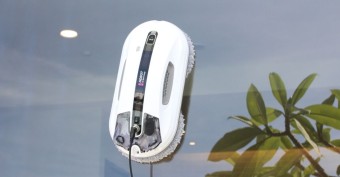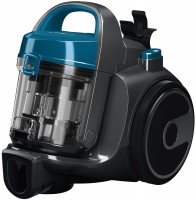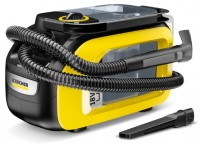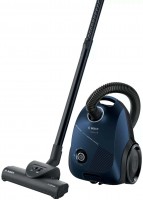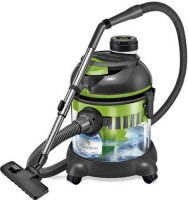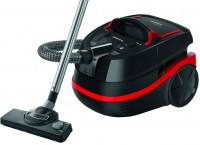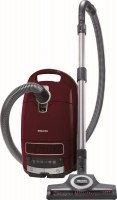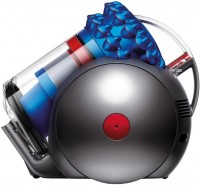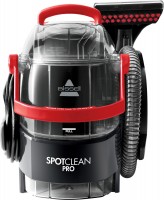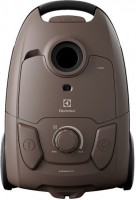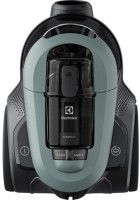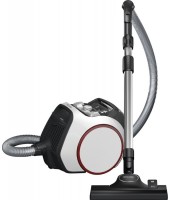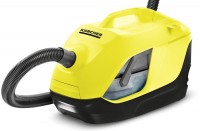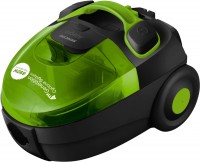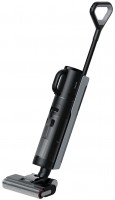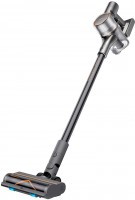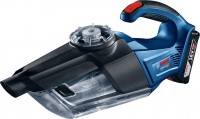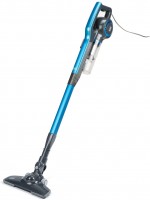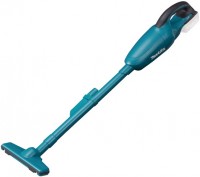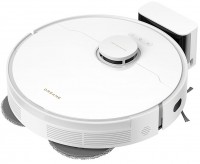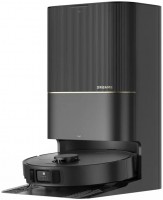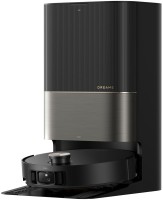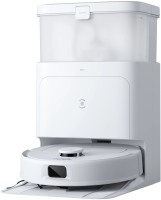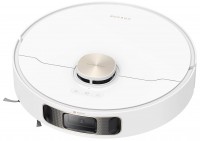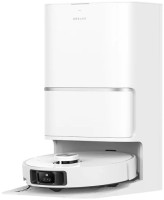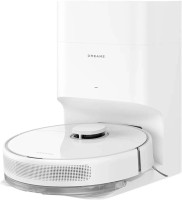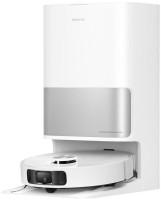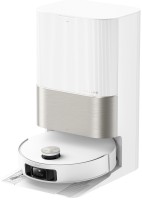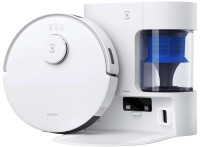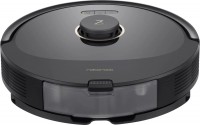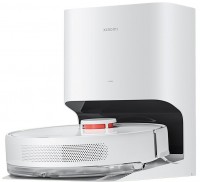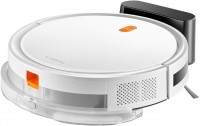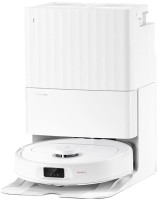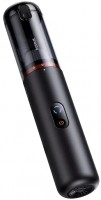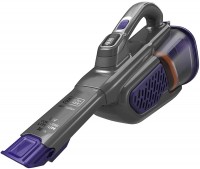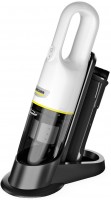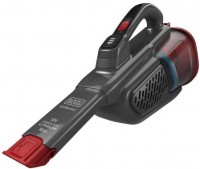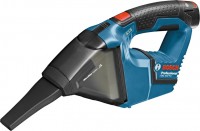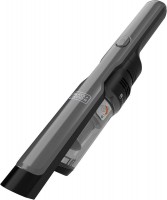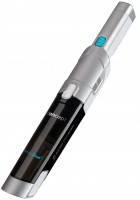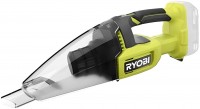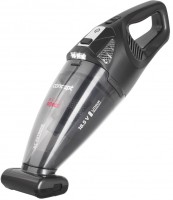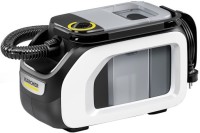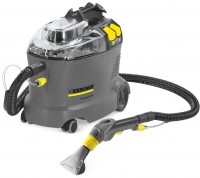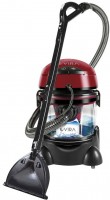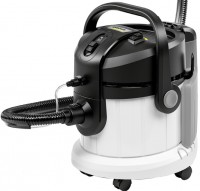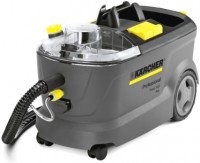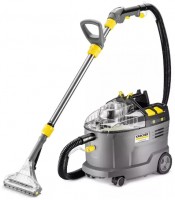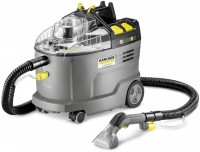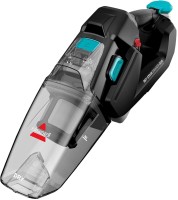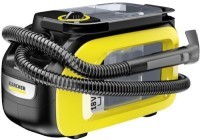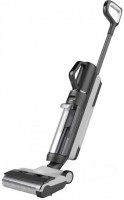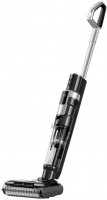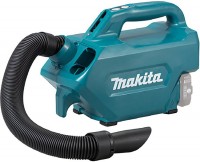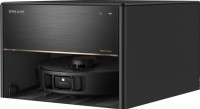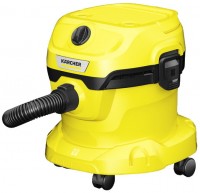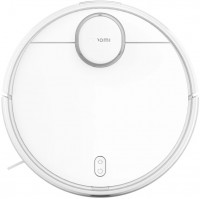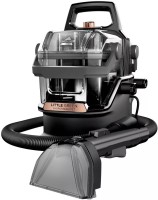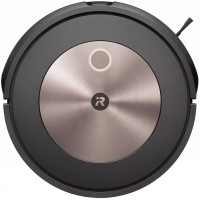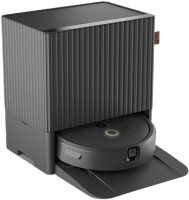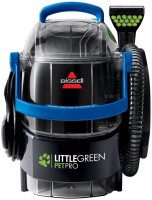How to choose a vacuum cleaner for your home
We independently test the products and technologies that we recommend.

We remind you that you can find a suitable vacuum cleaner yourself using our profile catalog with a convenient selection filter.
Choosing a vacuum cleaner for the home depending on the tasks
First, we recommend deciding which vacuum cleaner to get. There are indeed many current varieties, and among them there are both very universal and highly specialized solutions.
Let’s immediately make a reservation that here we are talking about home vacuum cleaners, so we will not dwell on automobile, industrial manual and household models (used by cleaning companies, hotel staff, etc.). Let us only briefly touch on several narrow-profile varieties, namely:
- backpack vacuum cleaners. Carried on the back for ease of use and maneuverability. They are more often used for commercial purposes (for example, in cinemas), but in everyday life they may be more appropriate in a large multi-storey mansion;
- construction models. They are used in factory workshops and construction sites. In domestic conditions, they are useful at the stage of major repairs, but in such a situation it is better to rent the device or turn to specialized cleaning services;
- vacuum cleaners for fireplaces. They serve to collect ash and are ready for high temperatures. Homes can only be useful if you regularly use a fireplace, charcoal grills, etc. More often needed in hotels and catering establishments;
- electric brooms are devices for maintaining cleanliness that have a brush with a drive for sweeping away debris.
As you can see, many varieties have already been eliminated, but potential buyers of home vacuum cleaners still have plenty to choose from, which we’ll talk about next.
Conventional vacuum cleaners

This vacuum cleaner is deservedly considered the most versatile assistant - it is designed for cleaning apartments and houses, not only for dry, but also for wet cleaning. With high power and an abundance of attachments, a regular model will successfully cope with both complex (carpet cleaning) and local tasks (upholstered furniture care).
When to consider buying a regular vacuum cleaner:
- your scenario for combating household pollution - general or systematic (for example, weekly) cleaning;
- you have a large apartment or house;
- there are carpets and other floor coverings with pile;
- have small children and/or pets.
Upright vacuum cleaners

Vertical models are fairly compact devices, similar to a mop with an additional capacity - a dust collector. It is most often located at the top, but there are other arrangements - at the bottom or almost along the entire length of the tube. These are lightweight, maneuverable and often more convenient to use devices (with the exception of cleaning under sofas, beds or cabinets). They can always be at hand and quickly ready for work.
Upright vacuum cleaners are often not as powerful as conventional appliances, so the main application scenarios are different. It’s worth taking a closer look at this model if:
- your anti-pollution scenario is regular maintenance of cleanliness, including daily light cleaning;
- you have a small apartment without carpets;
- you need a vacuum cleaner that is ready for use almost instantly;
- Looking for a more effective alternative to a broom, for example, in the kitchen: it will come in handy when sugar, flour or other products spill.
By the way, among such models there are transformers - vertical vacuum cleaners with a portable (removable) unit. This unit turns into a hand-held device that is suitable for local tasks - cleaning dust on shelves and tables, cleaning furniture or car interiors.
Robot vacuum cleaners

Robots are a fundamentally different type of cleaning equipment, as they operate without human intervention. Such models can make life easier for household members, especially for constantly busy people. It is worth considering that robots have low suction power, so they do a good job of maintaining cleanliness, that is, collecting dust and other minor contaminants, but they are less suitable for serious cleaning.
You should consider such a vacuum cleaner if:
- want to automate the process of dealing with dust, crumbs, etc.;
- your anti-pollution scenario is to regularly maintain cleanliness.
Note that robots are functionally very different from other types of vacuum cleaners. Accordingly, the key selection criteria are different. If you want just such an assistant, we recommend that you read the profile material “How to choose a robot vacuum cleaner: for home, apartment, dry and wet cleaning.”
Handheld vacuum cleaners

A manual household vacuum cleaner is suitable for local cleaning in an apartment or house. Such models are compact and lightweight, but have low power, so they are suitable for relatively simple and small tasks - collecting dust and crumbs from shelves, tables, PC keyboards. They primarily act as a complement to other vacuum cleaners.
Note that among hand-held instruments there are even more narrow-profile ones. These include bed vacuum cleaners. One of their features is a UV lamp designed to combat dust mites. This model is suitable for disinfecting bed linen, mattresses, upholstered furniture, etc.
Let's summarize the types of vacuum cleaners
By and large, none of the types of vacuum cleaners mentioned above excludes the other. If you have the financial means (and storage space), several devices can be useful. Let's say a regular (traditional) vacuum cleaner can be used on weekends, a vertical or manual one can be used only in the kitchen or to care for upholstered furniture if necessary, and a robot can be used to keep hard floors clean every day. But if the budget is limited, then when choosing, you need to start from the objectives being pursued. And here the most versatile (but not necessarily the most convenient) remains the traditional vacuum cleaner.
Types of cleaning and operating principles of a washing vacuum cleaner
Most vacuum cleaners are designed primarily for dry cleaning, that is, they “know how” to collect dust and small debris. Afterwards, you can wash the floors using your usual mop.
But recently, more vacuum cleaners have appeared that support two types of cleaning - dry and wet. The latter involves the use of liquid, be it simply wiping the floors with microfiber and lightly moistening, or a full-fledged wash. Only a small proportion of models support exclusively wet cleaning (without dry cleaning). This is more typical for industrial or household solutions, rather than for home ones.
Supporting wet cleaning does not mean that you have a washing vacuum cleaner. This category includes models that perform full floor cleaning. They usually have an additional compartment for water and detergent, and can spray soapy water onto the floor (or carpet) and then absorb it along with the dirt. Among home solutions, only ordinary household vacuum cleaners can support such a function. They usually have large dimensions and a fairly high price tag.

Many models that support wet cleaning simply offer a special wiping attachment. Plus, among related solutions, which are not essentially vacuum cleaners, we can highlight electric mops and robotic floor polishers.
Regardless of the type of cleaning (dry or wet), some models support a water collection function, which is useful when liquids are spilled.
Dust container type
The next important question when choosing a vacuum cleaner is to decide on the type of dust collector. Today, buyers are offered three options:

- Bag. The most affordable, structurally simple, but in some aspects (for example, in terms of hygiene) a slightly outdated option. It is most often found in ordinary household and construction models. Bag vacuum cleaners can provide excellent suction power and a good dust bin capacity that will last for many cleaning cycles. But there are also disadvantages. The main drawback is that as the bag is filled, the power parameters invariably drop. Yes, and not everything is so simple with cleaning. To empty a reusable dust container, you will have to come into contact with dirt and it is not so easy to avoid the columns of dust around. And if you use disposable bags, you need to buy new ones to replace them.
- Cyclone system. The most popular type of dust collector. It is used in the vast majority of traditional, upright and manual vacuum cleaners, as well as robots. Its trick is the distribution of absorbed debris along the bottom and side walls of the container, as a result of which the suction power does not decrease as the system fills. Models with a cyclone are quite easy to empty - sometimes there is a hinged lid with a button, so there is no direct contact with debris. True, such containers are not so spacious, and the vacuum cleaners themselves are a little noisier and cost a little more than their bagged counterparts. Although the price difference is gradually leveling out.
- Aquafilter. This is the most modern version of the dust collector, which is a tank of water. The liquid performs additional filtration and helps to lightly humidify the air, effectively retaining various contaminants, even the smallest. Aqua filters are most often found in conventional vacuum cleaners, since with such a container the device is not the most compact and rather heavy. But there are also exceptions to the rules. This type of dust collector is ideal for both wet cleaning and full floor washing. At the same time, devices with an aqua filter are usually more expensive than other varieties. And it is extremely important to empty the water tank, rinse and dry it after each cleaning, otherwise the water will bloom, bacteria will multiply, and unpleasant odors will appear.
Which dust collector is right for you? Here you need to independently analyze the pros and cons. The most balanced solution in terms of price and quality is a cyclone container. If you're on a budget and willing to periodically empty a reusable fabric dust bag, you might consider a bag. But families with allergies and small children, buyers who want a functional device with wet cleaning, should pay extra for a vacuum cleaner with an aqua filter. We also note that there are models on sale with several dust collectors included. You won't have to compromise with them.
Power supply for vacuum cleaner
With the increase in the assortment of vertical and manual models, buyers now have variability in terms of power sources.
Corded vacuum cleaners only work when connected to an outlet and are ready to operate almost non-stop. They are, as a rule, more powerful, which means they quickly cope with the main task - absorbing debris. Most often among home solutions, mains power is found in conventional vacuum cleaners. They are suitable for general cleaning and use in heavily soiled areas.
If a corded vacuum cleaner is more suitable for you, be sure to pay attention to the following before purchasing:
- the length of the power cord and the total range of action (takes into account not only the wire, but also the hose and tube);
- the presence of an automatic winder, without which operation will be less comfortable;
- general dimensions and the presence of such practical little things as a telescopic tube, a bumper on the sides of the case, soft wheels that do not scratch delicate floor coverings, carrying handles, etc.
Rechargeable models are autonomous and mobile, not tied to an outlet. This power supply method is popular among upright and hand-held vacuum cleaners, with which the user can also count on lightness, compactness and additional ease of use. Don't forget, the battery will be discharged one way or another, which means it will take time to charge. However, in order to mitigate this shortcoming, individual devices are combined - they can work from the network and be charged at the same time.
Cordless devices are not as powerful, which limits their scope of application: they are optimal for maintaining cleanliness and light or local cleaning.

For cordless vacuum cleaners, very important selection criteria are:
- type of battery (battery). The leaders today are Li-Ion batteries, which provide decent durability (a large number of operating cycles). But for rare applications and difficult operating conditions (for example, unheated rooms), it is still permissible to consider vacuum cleaners with a Ni-Mh battery;
- autonomy time. Ideally, it should cover the duration of cleaning with a margin;
- duration of the charging cycle. It is logical that the faster the better, but often everything depends on the battery capacity, that is, a long-lasting vacuum cleaner will require a sufficiently long power supply;
- removable or built-in battery. The last option is more common. But the removable design makes it easy to replace the battery with a new one or use two batteries at once (one in operation, the other in charging).
For battery models, it is also welcome to have a charging station(also used to store the device), the presence of a charge indicator, and support for power from USB (and for motorists, from the cigarette lighter).
Power
The effectiveness of absorbing dust and debris is reflected in the suction power (indicated in watts (W)). This is what you should focus on when choosing a model. Here are the basic recommendations for conventional vacuum cleaners:
- up to 200 W - for hard floors (tiles, laminate, parquet, linoleum) in the absence of complex dirt (for example, there is no need to remove pet hair);
- 250 - 300 W - if there are no carpets, but there are small children, a cat or dog, etc.;
- from 350 to 400 W - for caring for carpet and soft surfaces with a short pile length;
- above 400 W - for carpets with long pile + in the presence of pets.
You cannot find such high performance in manual models, robots and most vertical devices. This is why they are less suitable for really difficult cleaning. True, sometimes a turbo brush can come to the rescue - an attachment with a rotating roller that effectively removes fur and hair. It is to some extent able to compensate for the lack of suction power.

Note that many manufacturers simply indicate power consumption: it reflects the electricity consumption of the engine. Its value is usually 3 to 6 times higher than the actual suction rate. Therefore, immediately assuming that a 2200 W device is better than an 1800 W device is not entirely correct. He is definitely more “gluttonous”. Also, sometimes instead of suction power, suction power is given (indicator in Pascals). As a rule, the higher it is, the better the model works on difficult floor coverings (carpets), but sometimes it absorbs dust from smooth surfaces worse.
You can read more about suction power and other recommendations regarding power in our material “Vacuum cleaners: Answers to the most frequently asked questions.”
Even before purchasing, it would be a good idea to pay attention to the presence of a power regulator, as well as its location. It can be located on the body or the handle, and the second option is clearly more convenient (in the case of a regular vacuum cleaner, you won’t have to bend over). And modern robots sometimes have automatic power adjustment - when they drive onto a carpet, they themselves increase the engine speed.
Complete set of nozzles
The standard set of working accessories for a vacuum cleaner today includes a combined brush for floors and carpets, a dust and crevice nozzle. But the equipment of advanced models is not limited to this. Among the most popular additional accessories, there is often a nozzle for upholstered furniture, parquet, and various versions of the previously mentioned turbo brushes. In addition to the regular one, there is a mini version (for furniture upholstery) or electric. The latter has a separate drive for rotating the roller and increases the efficiency of carpet cleaning.
For wet vacuum cleaners, the package often includes microfiber, a floor polisher (for wiping), a washing attachment or a mop.
Other narrow-profile accessories include mattress nozzle, animal nozzle, corner nozzle, siphon nozzle, twister nozzle, etc.
If you are interested in a vacuum cleaner with an extended set, then do not forget that the accessories must be periodically cleaned and stored somewhere. Some models have a special compartment for attachments in the body, and some robots may even have a self-cleaning function.

Air cleaning
Almost all modern vacuum cleaners are equipped with filters. Their task is to keep small particles of pollution from returning to the room. Increasingly, models include HEPA fine filters. They differ by class, where the higher the number, the more particles are captured (including bacteria and allergens). If you have allergies or small children or pets, then it is advisable to consider vacuum cleaners with HEPA 13 and higher.
Our profile material “From G1 to U17: classification of air filters by degree of air purification” will help you better understand the filtration systems used today.
We also note that some vacuum cleaners are equipped with a UV lamp specifically for hygienic processing. Plus, in general, it’s not superfluous to figure out the practical aspects of the filters at the selection stage - whether they can or cannot be washed, whether there are additional features, such as self-cleaning, what service life they are designed for, etc.
Noise level, ergonomics and other options
Another really important criterion for choosing a vacuum cleaner, which is sometimes forgotten, is noise. Many models are objectively very loud - more than 80 dB. With such devices, during long cleaning cycles, it is worth wearing hearing protection. Vacuum cleaners are considered quiet if their noise level does not exceed 65 dB. This is a good choice for families with small children, elderly people, and pets sensitive to acoustic discomfort.
One of the determining factors for ease of use is weight. It is sometimes even more important for manual and vertical models. But there are other ergonomic features, namely:
- dust bin full indication;
- practical tube - telescopic or - like some vertical models - even bendable ;
- illumination in the nozzle area - increases the visibility of dust and debris in various hard-to-reach places (under furniture, etc.);
- informative controls including display.

Among the additional functions that may be useful to some users, it is worth highlighting the blowing modes.
Popular vacuum cleaner manufacturers
Among the manufacturers of vacuum cleaners there are both specialized brands and well-known names in the technology and electronics market. We have divided the main noteworthy brands into several groups:
- budget. This, for example, includes many of the simplest models from Xiaomi, Sencor, Amica, Gorenje and Black&Decker (vertical and manual), BASEUS (manual and automotive);
- middle class - Philips, Bosch, Samsung, Rowenta, Electrolux, Zelmer, Roborock (robots);
- specialized brands with predominantly advanced solutions - Karcher, Thomas, Dyson, Dreame (robots and vertical models), Hoover (market pioneer).
Almost any of the above brands has a wide range of vacuum cleaners, so even within a separate brand there will be plenty to choose from.
In conclusion, we note that when choosing a vacuum cleaner, you should first decide on the tasks that it should solve. It is imperative to take into account such individual factors as the preferred frequency of cleaning, the area of the room, the type of floor covering, and typical types of contamination. Next, you should understand the requirements for convenience, hygiene, clean air, noise level, and then look at brands that fit into your budget.
Articles, reviews, useful tips
All materials